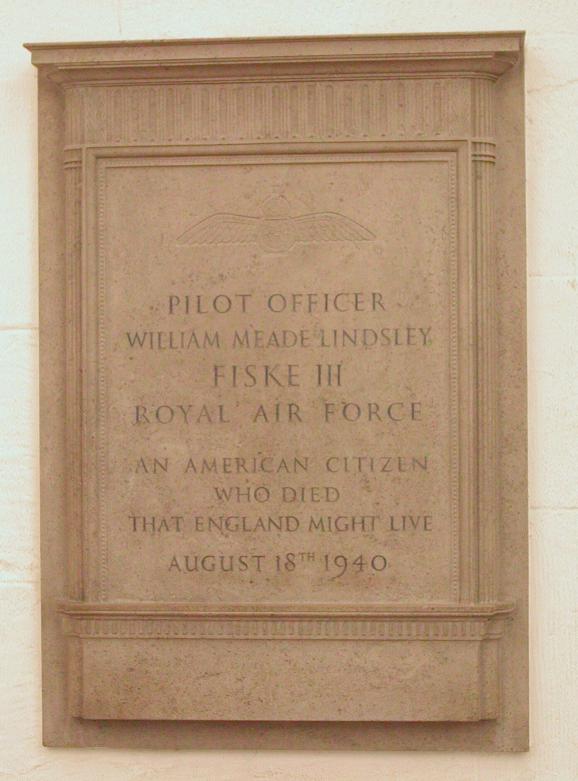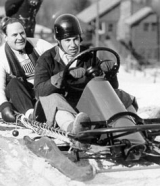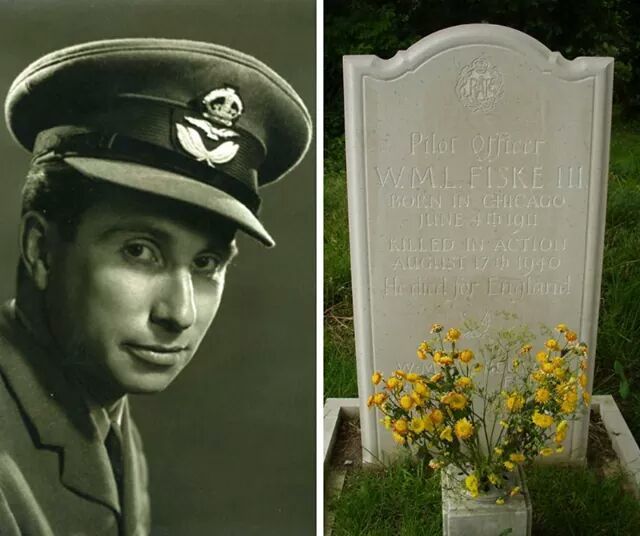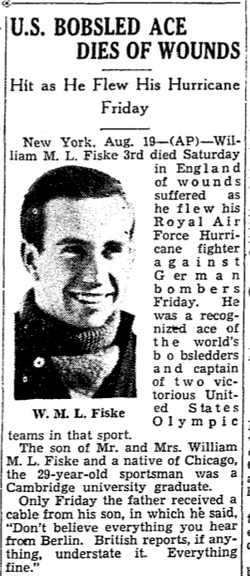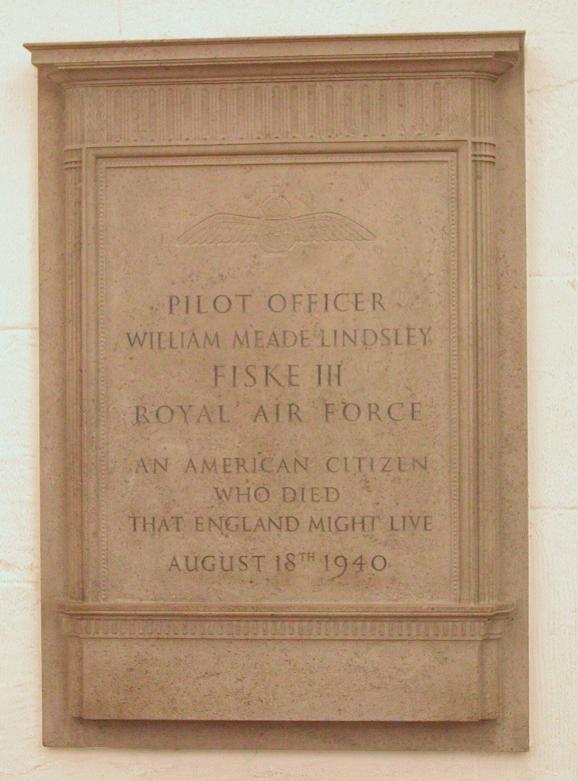William “Billy” Fiske III – Battle of Britain Plaque
Details:
In the crypt of the Cathedral.
An inscribed brownish marble plaque remembering the Olympian who joined the RAF and fought and was killed in the “Battle of Britain”.
From the St. Paul Cathedral Website:
Billy Fiske and the Battle of Britain - 1940
The incredible story of an 'American who died that England might live'
Among the memorials great British heroes from across the years, in the crypt of St Paul's you will find a plaque to an American who won two Winter Olympic gold medals before giving his life as a pilot in the Battle of Britain.
Born in New York in 1911, William Meade Lindsley Fiske III, known to most as Billy, wouldn't live to see his 30th birthday, but managed to leave a lasting legacy.
At just 13, Fiske moved to France where he discovered the sport of bobsleigh and within three years he was driving the USA team, at that that time made up of five men, to victory at the 1928 St Moritz Winter Olympics. He would remain the youngest Winter Olympic champion for another 60 years.
Four years later at Lake Placid, Fiske was selected to carry the US flag during the opening ceremony and his team - now four men - went on to win gold again.
As well as his Olympic success, Fiske was a Cresta Run champion and helped the Colorado town of Aspen become one of the world's leading winter sport destinations.
It is likely Fiske could have gone on to win a third consecutive gold, but made the decision to boycott the Nazi-organised Games of 1936 in Garmisch-Partenkirchen.
After taking such a principled political stand, it is not surprising that Fiske bypassed his own nation to join the war effort, and upon the outbreak of the Second World War, he used forged Canadian papers and his contacts to become a member of 601 Squadron based at Tangmere in southern England.
His diary at the time read: "I believe I can lay claim to being the first US citizen to join the RAF in England after the outbreak of hostilities.”
And it was as an RAF pilot that Fiske became involved in what remains the most famous air campaign of them all - the Battle of Britain.
As one of just 11 American pilots in the campaign, Fiske flew a Hawker Hurricane during the battle and received high praise from his commanders. Squadron Leader Archibald Hope commented: ‘'Unquestionably, Billy Fiske was the best pilot I've ever known. It was unbelievable how good he was. He picked it up so fast it wasn't true. He'd flown a bit before, but he was a natural as a fighter pilot."
Despite his talent, just ten days after joining his squadron, Fiske would be dead. Having taken a bullet to the fuel tank, he managed to land his plane, but would succumb to his injuries in hospital two days later, aged 29. He was buried in the churchyard of St Mary and St Blaise, in the southern English town of Boxgrove.
The following year on American Independence Day, a plaque was unveiled in the crypt of St Paul’s by Sir Archibald Sinclair, the Secretary of State for Air.
The plaque reads, simply: "An American citizen who died that England might live”.
At the ceremony, the words were spoken: "Here was a young man for whom life held much. Under no compulsion he came to fight for Britain. He came and he fought and he died.”
Under Fiske's memorial plaque at St Paul's is a small box containing his RAF flying wings.
See this website, Site Boxgrove, ISOB Fiske and William “Billy” Fiske III Stained Glass – “Battle of Britain” Memorial for more on this hero.
Monument Text:
The text on the plaque is written in English and reads:
PILOT OFFICER
William Meade Lindsley
FISKE III
ROYAL AIR FORCE
AN AMERICAN CITIZEN
WHO DIED
SO ENGLAND MIGHT LIVE
AUGUST 18TH, 1940
Commemorates:
People:
William Meade Lindsley “Billy” Fiske
Units:
601 Squadron, RAF
Royal Air Force (RAF)
Royal Air Force Volunteer Reserve
Wars:
WWII
Battles:
Battle of Britain
Other images :

